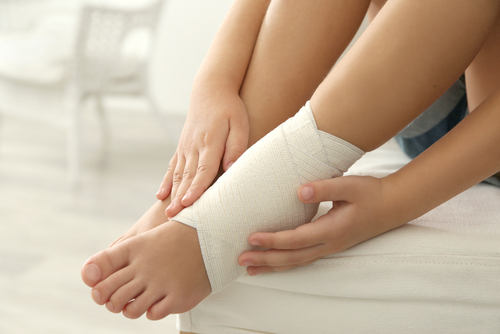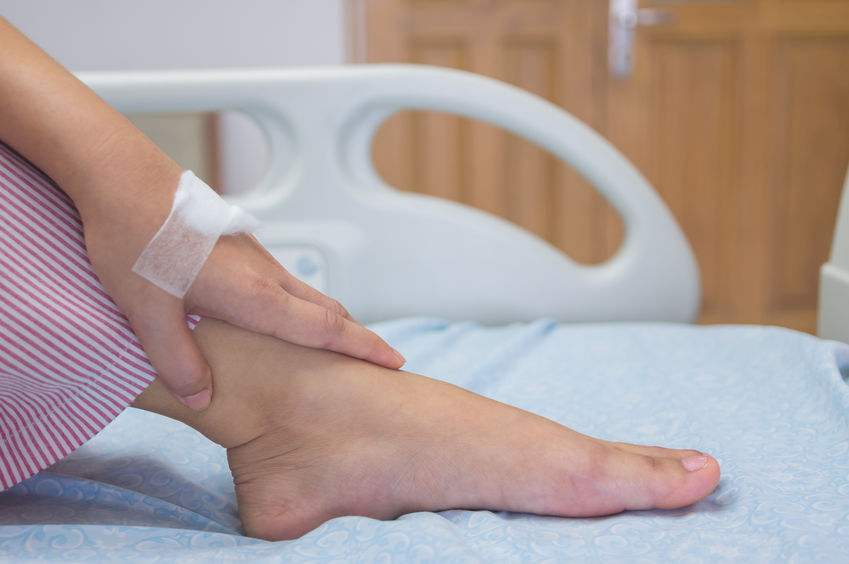Dance Talk
Our dance season never ends. Learn dance tips from the best.
Why Your Ankle Sprain Won't Heal


As a dancer, your ankles are a critical part of the work you do every day. If they're not in good health, then it can impact your ability to practice, as well as your performance on the stage. That's why it's so important to ensure when you do have an ankle injury, you seek proper medical treatment and give it the time it needs to heal, so you can be back in your dance sneakers and on your feet in no time.
But what happens when you have an injury that won't heal? You've followed instructions to rest it, ice it, compress it and elevate it. You've given it time and perhaps it's gotten a little better. Yet, you're still in pain and not able to dance at your best. What are the reasons? It could be due to any number of factors, from severity of the injury to the strength of your ankles. However, some of the most common reasons why an ankle sprain won't heal include:
A misdiagnosis.
Your ankle sprain might not be a sprain at all. That's why, if you're still experiencing pain weeks or months later, it's important to seek care from a trained medical professional. For instance, if you're facing stiffness, swelling, locking and numbness months later, then another physical exam and perhaps even imaging is necessary to ensure there isn't another underlying cause of your pain. There could be damage to the cartilage or even a fracture that was missed at the time of the injury. Issues like peroneal tears and tarsal coalition should also be ruled out. Keep in mind too, the longer you wait to seek treatment, the more damage could be occurring.
Inadequate rehabilitation.

You might think your injury is only an ankle sprain. But taking a flippant attitude toward it can actually cause more pain, limiting your range of motion, leading to chronic instability and re-injury. It can even cause arthritis later on. Again, that's why it's so important to get help from a trained medical professional, in particular a physical therapist.
They can ensure you have an accurate diagnosis, even if you think it's just a sprain. They can also work with you to design exercises and stretches that will stretch out and strengthen the ankle and the calf muscles. In addition, they can advise you on which activities to engage in and which to stay away from for a while, all so you can maintain your dancing abilities, your strength and your cardiovascular fitness. Finally, they can work with you on re-training the muscle sensation and getting back your balance, both of which are crucial to any dancer.
Doing your therapy wrong.
You have an exercise regime to get your ankle back on track. But if you're not doing it properly, then benefits will be minimal. Just as poor technique impacts your dancing abilities and performance, poorly performed physical therapy exercises can actually end up doing more harm than good. So make sure you are following the instructions precisely that your care provider gave you and that you're taking your time to get the exercises right, not doing them as quickly as possible just to complete them.
Rush to recover and get your dance sneakers back on.
As a dancer, you want to get back on the stage and in the rehearsal studio. But certain injuries, especially ankle sprains, can take a while to heal. In some cases, you might not fully heal for anywhere from six to ten weeks all the way up to a full three months. This can be unbearable when you're itching to get your dance sneakers back on.
But you need to be aware and adjust your expectations so you don't rush back into the studio too soon. Even if you start to feel better, you should wait to get the green light from your physical therapist or your doctor before you actually begin dancing again. If you don't, you could put yourself at a very high risk for a reoccurrence and another injury that which could end up being even more severe. Also, keep in mind, too, if you return to dancing too quickly, not only are you at risk for another sprain, but you can actually develop scar tissue as a result and even arthritis, which leads to a longer healing time.
Poor health habits.
If you have an injury and you're not eating well, staying hydrated and getting enough sleep, it's going to take your body longer to recover. For instance, when it comes to rebuilding an injured muscle, whether in your ankle or somewhere else in your body, water is vital. Without adequate fluid intake, the body doesn't have a mechanism for transporting out toxins and waste products, nor will your muscles get the electrolytes needed to maintain balance and heal after an injury.
Likewise, the diet you consume and the amount of rest you get can also play a big part in the healing process. Some key essentials that can help you heal after a sprain involve foods with calcium, phosphorous, magnesium, and Vitamin D. Your body also has the strongest healing power when it's at rest and sleeping. So getting enough shut-eye at night is an important component of any healing plan.
Keep in mind, injuries involving areas like the ankle can take longer to heal. That's because there's less blood flow and circulation than there is with other parts of your body. On top of that, inflammation and scar tissue can cause pain, which might make you wonder whether you're healing, yet they're a natural aspect of the process. You just have to be patient and also continue with your exercising, stretching and following the recovery plan of your healthcare provider, all so you can get your dance sneakers back on as soon as possible. Shop Dance Sneakers Here.

Follow Us
Follow Us online, join our conversations, engage with our teams around the world!